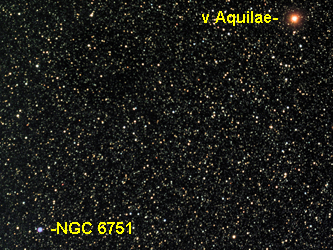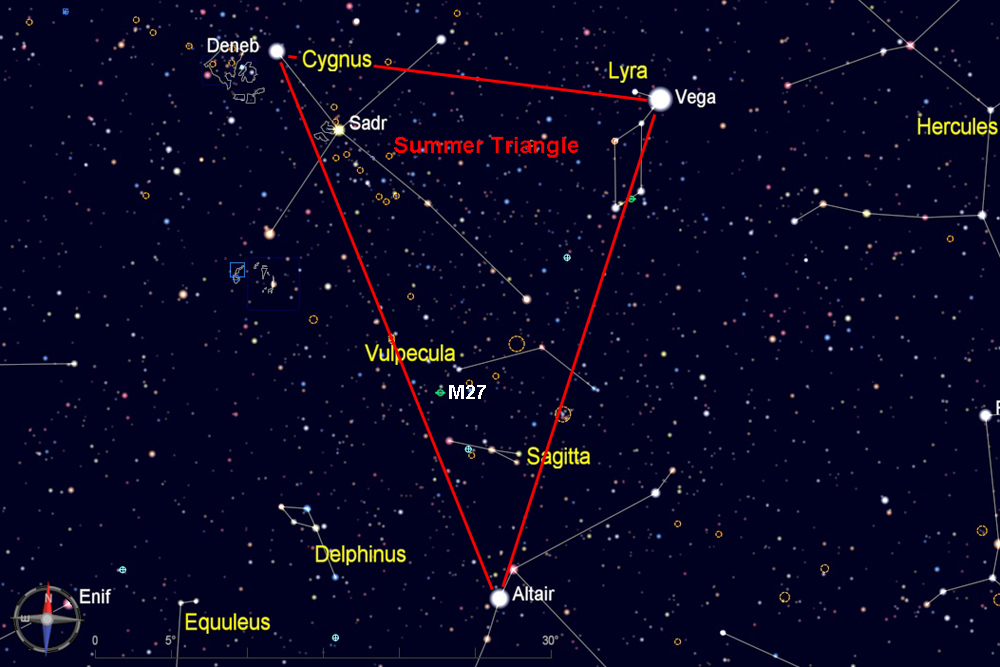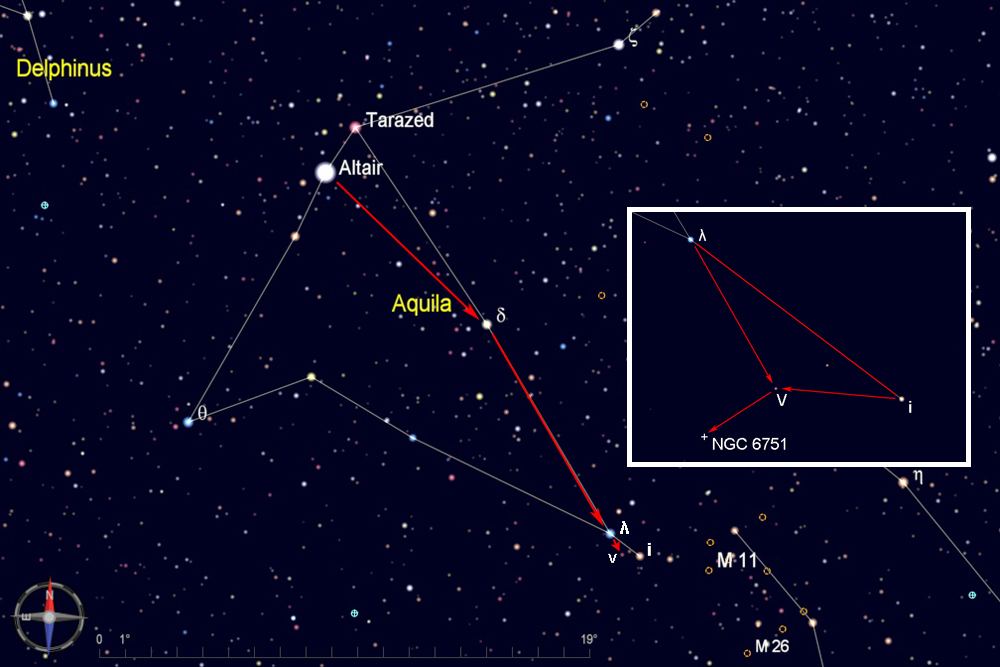
Start by finding the Summer Triangle, which consists of the three of the brightest stars in the sky--Vega, Deneb, and Altair. The Summer Triangle is high overhead throughout the summer, and it sinks lower in the west as fall progresses.
For this star hop, start from Altair in the constellation Aquila, the eagle.

From Altair, follow the stars that form the middle of the eagle's body and end with three stars that form a slightly hooked "tail". The first two of these stars are λ (lamda) Aquilae and i Aquilae. As shown more clearly in the inset below, V Aquilae is about half-way between and below these two stars. It should be visible in binoculars or a finderscope. With a telescope of moderate size, the small planetary nebula NGC 6751 should be visible 1/2 degree to the southeast.
